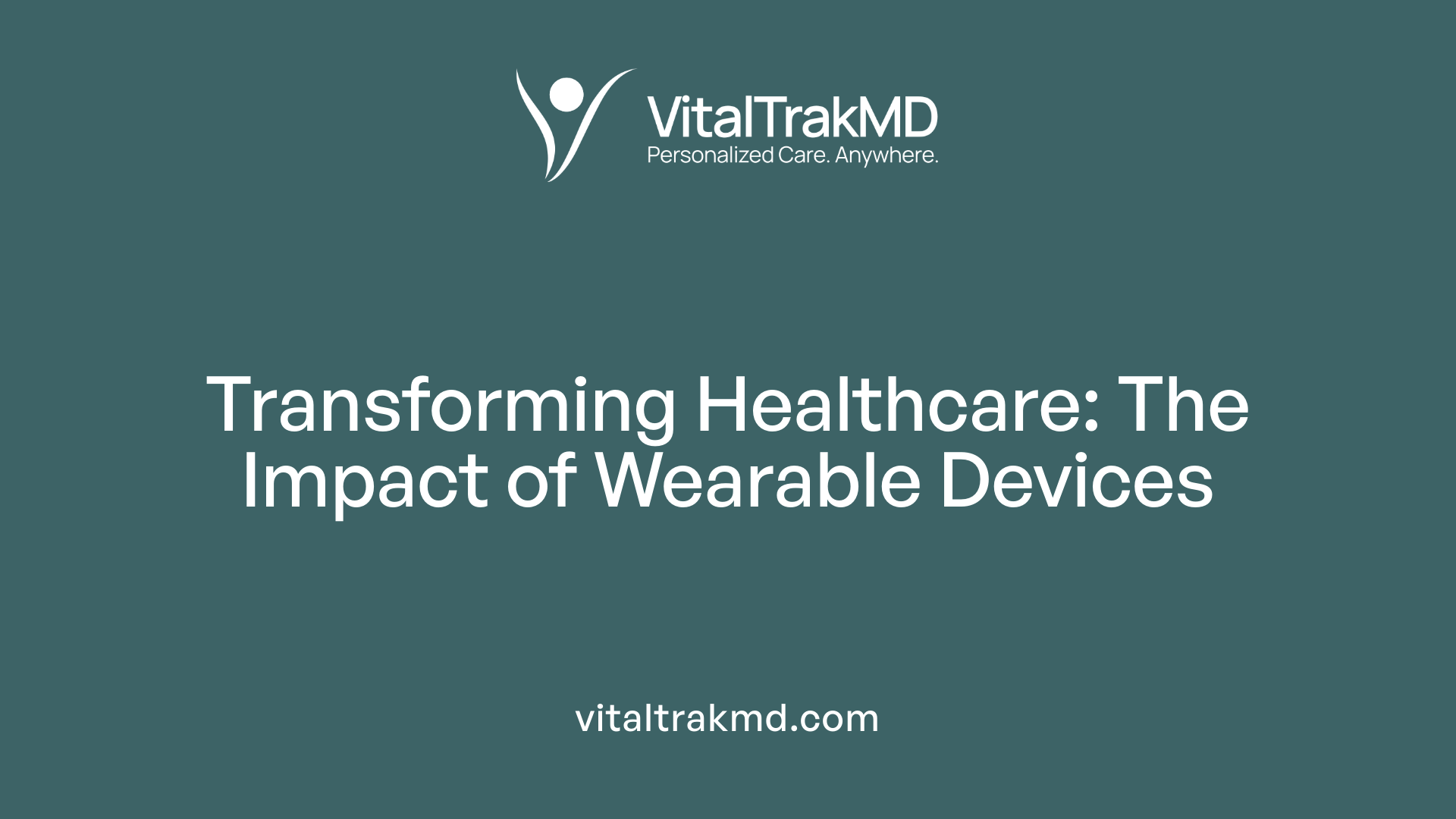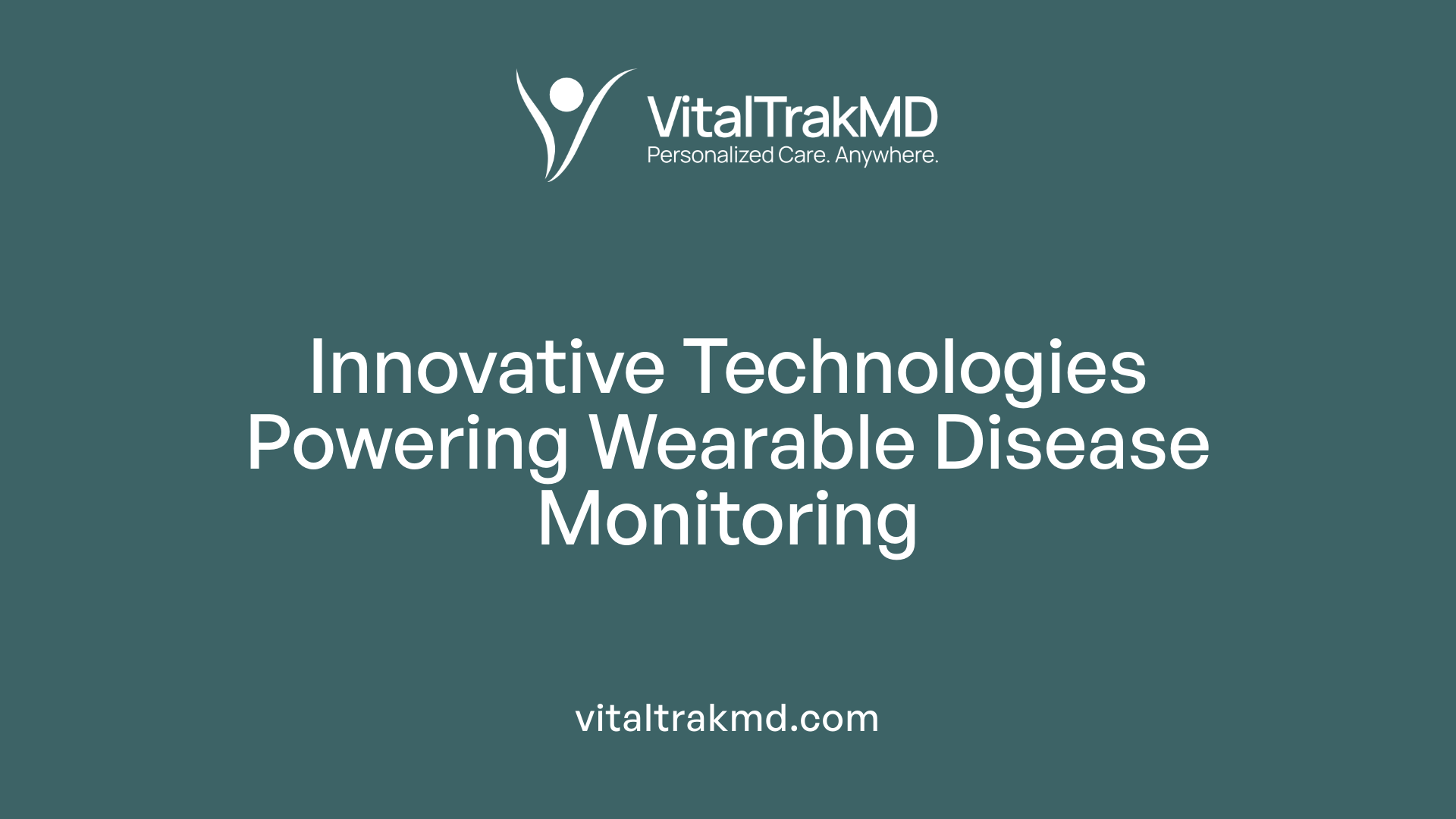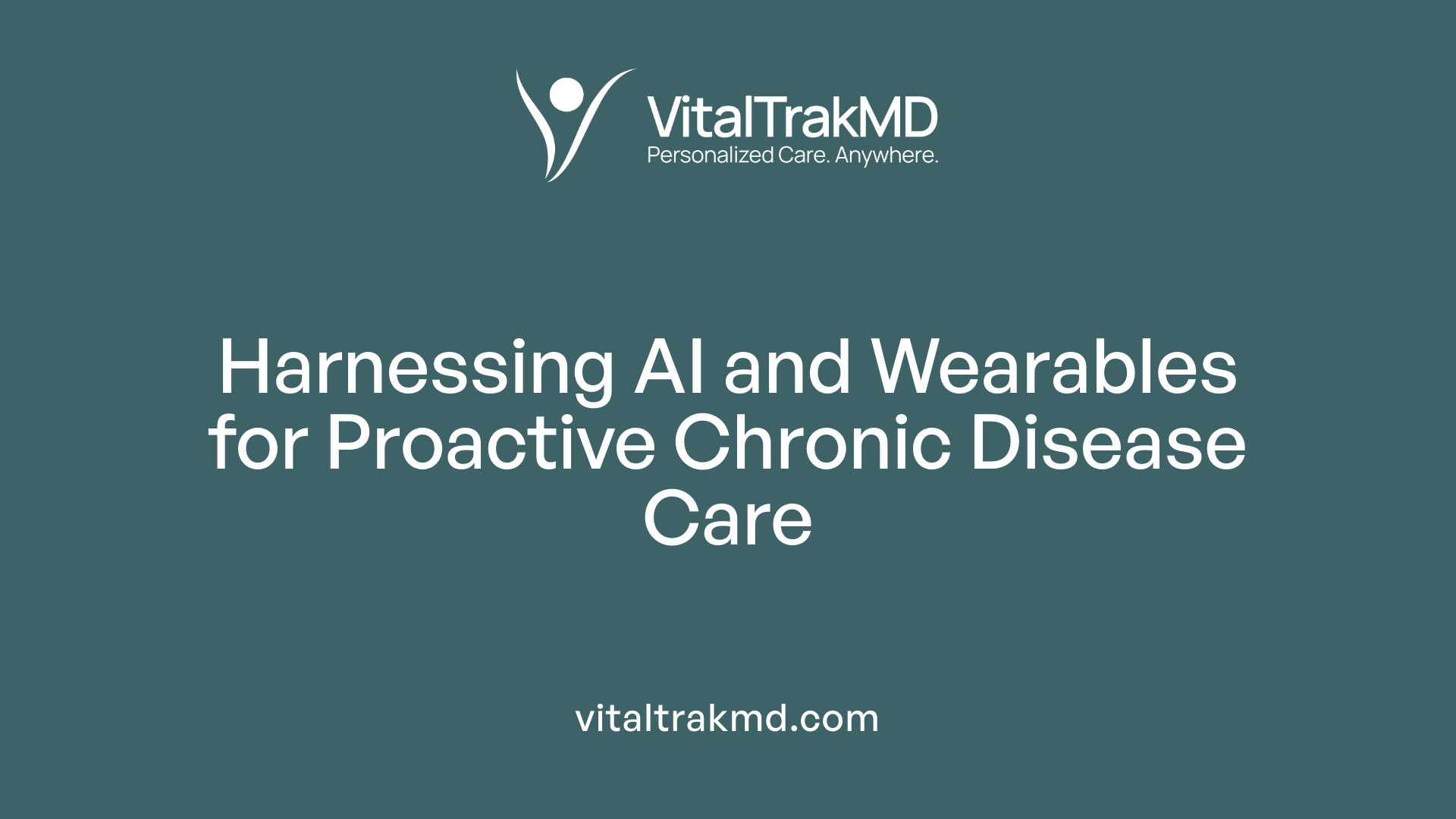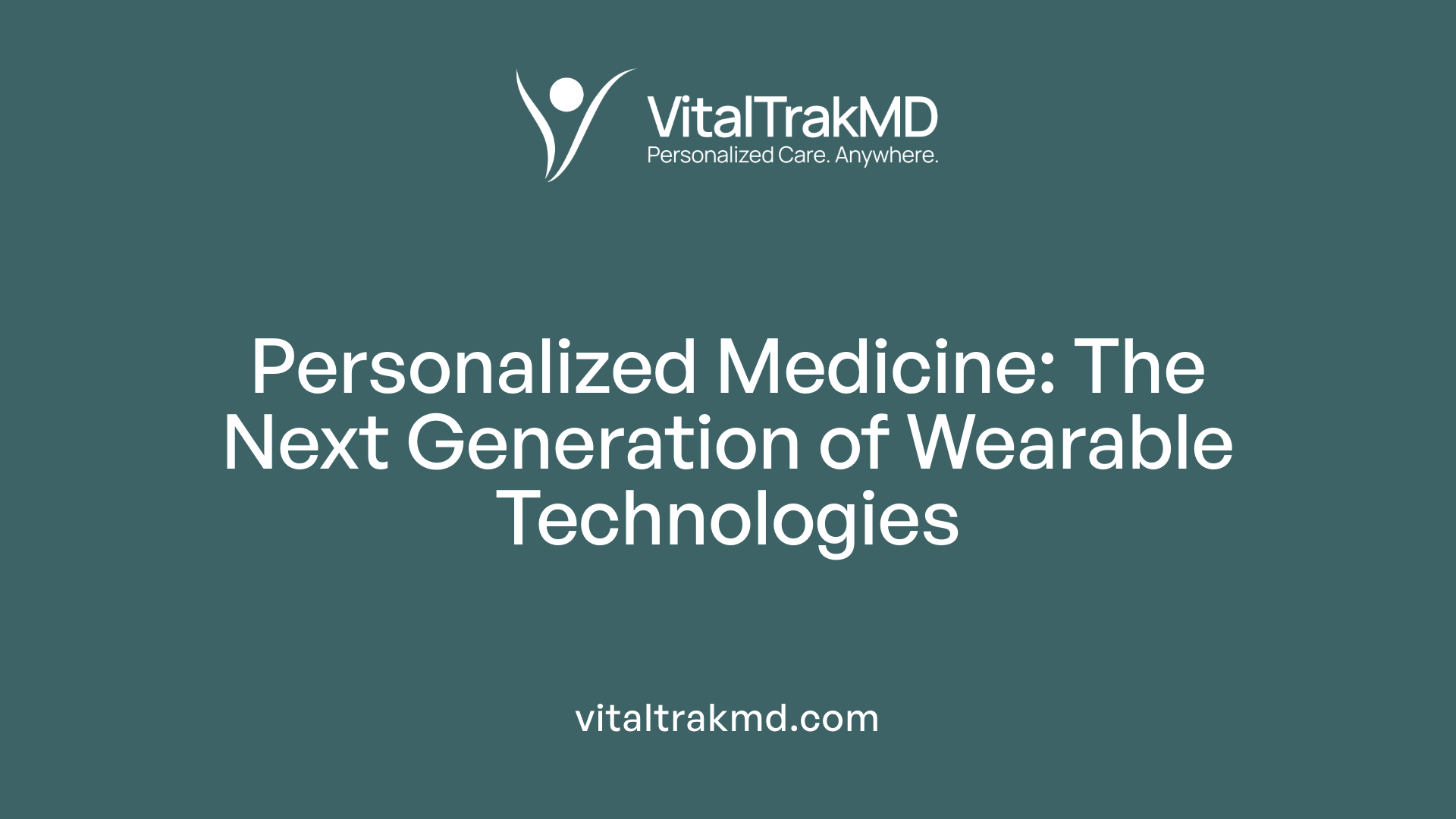The Role of Wearables in Chronic Condition Management

Harnessing Technology for Better Health Outcomes
Wearable health devices are increasingly becoming essential tools in managing chronic health conditions. They facilitate continuous, real-time monitoring and personalized care, revolutionizing how patients and healthcare providers approach long-term disease management. This article explores the multifaceted role of wearables, their technological underpinnings, benefits, challenges, and future prospects.
Overview of Wearable Health Devices and Their Applications

What are wearable health devices and their applications?
Wearable health devices refer to electronic gadgets worn on the body that continuously track various physiological health metrics. Common types include fitness trackers, smartwatches, biosensor patches, and specialized medical tools such as ECG monitors and blood pressure cuffs.
These devices monitor parameters like heart rate, blood oxygen saturation, blood glucose, blood pressure, respiratory rate, sleep quality, and physical activity. They generate real-time data that can be shared with healthcare providers for remote monitoring, early diagnosis, and chronic disease management.
Beyond basic monitoring, wearables play a significant role in promoting preventive health behaviors. They motivate users through goal setting, reminders, and gamified challenges, fostering better health habits. For example, continuous glucose monitors have revolutionized diabetes care by providing ongoing insights into blood sugar levels.
Advances are leading to innovative applications such as on-teeth sensors, smart contact lenses, and integration with artificial intelligence (AI) systems. These innovations enhance diagnostic accuracy, personalize treatment plans, and facilitate seamless data flow into electronic health records.
Overall, wearable health devices are transforming healthcare by enabling proactive, personalized, and remote management of health conditions. They are increasingly used in clinical practice, research, and daily wellness routines, contributing to better health outcomes.
Role of Wearables in Chronic Disease Management
How do wearables contribute to managing chronic health conditions?
Wearable health devices are revolutionizing chronic disease management by tracking health metrics continuously and providing real-time insights. These devices collect vital signs such as heart rate, blood pressure, blood glucose, oxygen saturation, respiratory rate, and sleep patterns. This constant stream of data allows patients and healthcare providers to make timely, informed decisions, preventing complications before they become severe.
In cardiology, wearables like smartwatches can detect irregular heart rhythms like atrial fibrillation and monitor blood pressure, helping manage conditions such as hypertension and arrhythmias. For respiratory conditions like asthma and COPD, wearable sensors measure respiratory rate and oxygen levels, aiding in early detection of exacerbations. Neurological applications include seizure detection for epilepsy and gait monitoring in Parkinson's disease to support neurorehabilitation.
In endocrinology, devices help monitor glucose levels for diabetes management and predict thyroid dysfunction using heart rate analysis. For oncology, wearables facilitate early detection of complications and track physical activity to support recovery. Mental health benefits are evident through wearables that monitor stress levels, detect anxiety, PTSD symptoms, and provide biofeedback for stress reduction.
Despite these benefits, challenges such as ensuring data accuracy, safeguarding privacy, device interoperability, and user adherence must be addressed. Nevertheless, wearables foster patient engagement by providing transparent health data, which helps motivate lifestyle changes and enhances adherence to treatment.
The integration of wearable devices with electronic health records and telemedicine platforms enables remote monitoring, early intervention, and personalized care, ultimately reducing hospitalizations and improving quality of life. As technology advances, so does the potential for wearables to transform chronic disease care into a more proactive, efficient, and patient-centered process.
Technologies Behind Wearables for Disease Monitoring

What technologies are used in wearable devices for disease monitoring?
Wearable health devices have seen remarkable advancements, employing a broad range of innovative technologies to monitor various health parameters continuously. They incorporate sensors like accelerometers, biosensors, electrocardiogram (ECG) sensors, optical sensors, and glucose monitors. These sensors track vital signs such as heart rate, blood pressure, blood glucose levels, respiratory rate, oxygen saturation, sleep quality, and activity levels.
Smartwatches, fitness trackers, biosensor patches, and other wearable gadgets transmit data in real time to healthcare providers. This live data sharing facilitates remote patient monitoring, early detection of health issues, and personalized care adjustments.
The integration of Artificial Intelligence (AI) and machine learning algorithms has enhanced data analysis capabilities within wearables. These advanced analytical methods help process the enormous data volumes, enabling early diagnosis, risk assessment, and treatment customization.
In addition to general health monitoring devices, specialized medical-grade wearables are also used in diseases like diabetes and cardiovascular conditions. Examples include continuous glucose monitors (CGMs) and biosensor patches designed to capture specific biomarkers accurately.
Emerging technologies are broadening the horizon for wearable health monitoring. Innovations such as smart clothing with embedded sensors, implantable devices, smart contact lenses, and hydrogel-based sensors are set to improve measurement accuracy and comfort while expanding the range of detectable health metrics. Collectively, these technological advances are transforming wearable devices into powerful tools for managing chronic diseases and improving overall health outcomes.
Challenges and Limitations of Wearables in Healthcare
What are the challenges and limitations of using wearable devices in healthcare?
While wearable health devices hold great promise for transforming chronic disease management, they also face several hurdles that can limit their effectiveness. One of the primary concerns is data privacy and security. Sensitive health information collected by these devices is vulnerable to breaches, raising fears about unauthorized access and misuse. Additionally, questions about who owns the data and how consent is obtained remain ongoing issues.
Another significant challenge relates to sensor accuracy and reliability. Factors such as motion artifacts, improper device placement, and external signal interference can lead to inaccurate readings. This can potentially result in misdiagnosis or inappropriate treatment decisions, undermining trust in wearable technology.
Interoperability and system integration also pose notable barriers. Different devices often use varying data formats and communication protocols, making it difficult to merge wearable data with electronic health records (EHRs). Achieving seamless integration requires standardization, regulatory approval, and technical compatibility, which can be complex and resource-intensive.
Furthermore, disparities in access limit the widespread adoption of wearables. Cost barriers, digital literacy deficits, and limited availability in underserved populations can prevent many patients from benefiting. Over-reliance on wearable data may also lead to an overwhelming influx of information for healthcare providers, complicating clinical decision-making.
Overall, addressing these challenges requires continued innovation, robust validation, and collaborative efforts among technology developers, healthcare professionals, and policymakers to ensure secure, accurate, accessible, and integrated wearable health solutions.
Future Trends and Innovations in Wearable Technology
What are the future trends and innovations in wearable health technology?
Looking ahead, the development of wearable health devices is set to accelerate with several exciting innovations. Advanced sensors and materials will play a crucial role, including the use of flexible, bioresorbable electronics, and novel substances like 2D materials and liquid metals. These improvements will make wearables more comfortable, durable, and biocompatible, allowing them to better conform to the body and last longer.
Emerging wearable devices will likely include contact lenses, epidermal tattoos, and implantable interfaces. These technologies will enable continuous, noninvasive monitoring of vital signs such as glucose levels, blood pressure, and oxygen saturation. Such advancements will support early detection of health issues and improve disease management.
Integration with AI and predictive analytics is another promising area. These intelligent systems will analyze real-time data from wearables to predict health trends, allowing for more personalized, proactive care plans. For example, AI-driven algorithms might anticipate a cardiac event or a worsening respiratory condition before symptoms appear.
New applications of wearable technology are also emerging. Wearable neuromodulation devices could offer novel therapies for neurological conditions, while haptic feedback systems will improve human–machine interaction in rehabilitation and mental health treatments.
Furthermore, these devices are expected to become seamlessly integrated into daily life. Wearables embedded in clothing, accessories, or even contact lenses will transform health monitoring into a more comfortable, natural experience. Such integration will support clinicians and users to focus on prevention and wellness, rather than just treatment.
Overall, ongoing innovations will create highly precise, user-friendly, and interconnected health solutions. This evolution promises to revolutionize clinical care, making health management more effective, personalized, and accessible, ultimately fostering better outcomes for patients worldwide.
AI and Wearables: Advancing Chronic Disease Management

How is AI integrated with wearables to improve chronic disease management?
Artificial Intelligence (AI) plays a vital role when combined with wearable health devices, transforming how chronic illnesses are monitored and managed. These intelligent systems continuously gather physiological data such as heart rate, blood glucose, ECG, respiratory rate, and oxygen saturation through sensors embedded in wearables.
AI algorithms analyze this massive stream of data in real time to identify patterns, detect anomalies, and predict potential health risks. For instance, AI can recognize early signs of arrhythmias or blood sugar fluctuations, allowing for timely interventions before complications arise.
This integration enables personalized treatment plans that adapt to each patient's unique health patterns. Wearables equipped with AI capabilities transmit data securely to healthcare providers via the Internet of Medical Things (IoMT), supporting remote monitoring and proactive care.
One key benefit is early warning systems, where AI-powered alerts notify both patients and clinicians about deteriorating conditions, prompting adjustments in medication or lifestyle. This shift from reactive, hospital-centered care to a proactive, patient-centered approach enhances health outcomes.
Moreover, AI supports clinicians in decision-making, optimizes workflow efficiency, and promotes patient engagement through tailored health advice, reminders, and automatic notifications. Despite challenges like ensuring data privacy and device compatibility, this synergy between AI and wearables leads to improved disease management, reduced hospital admissions, and a better quality of life for individuals with chronic conditions.
In summary, AI-driven wearable technology offers a dynamic, precise, and personalized strategy for chronic disease care, empowering patients and clinicians alike to achieve more effective health management.
Impact of Wearables on Healthcare Practice and Patient Outcomes
What is the impact of wearable devices on health outcomes for chronic disease patients?
Wearable health devices play a significant role in transforming patient care by enabling continuous, real-time health monitoring. They have been linked to improved physical activity levels, better disease management, and overall health outcomes. For example, sustained use of wearables has been associated with increased exercise adherence among patients with hypertension and chronic lung conditions.
These devices empower patients to actively participate in their own care by providing instant feedback on physiological parameters such as heart rate, blood pressure, blood glucose, and activity levels. This immediate data sharing supports timely interventions and encourages healthier behaviors.
Clinicians also benefit by gaining access to ongoing, detailed health information, which enhances decision-making and personalizes treatment plans. Systems that integrate wearable data with electronic health records facilitate remote monitoring and early detection of health deterioration, reducing the need for frequent in-person visits.
Overall, wearables foster a proactive approach to managing chronic illnesses, helping to prevent complications, decrease hospitalizations, and improve quality of life for patients.
Integrating Wearables into Healthcare Systems

How are electronic health records and interoperability managed when integrating wearables?
Effective integration of wearable devices into healthcare systems requires seamless communication with electronic health records (EHRs). Achieving interoperability involves adopting standard data formats and open protocols, such as HL7 and FHIR, to enable different systems to share and interpret health data accurately.
Many wearable devices generate large streams of data, including vital signs, activity logs, and physiological measurements. When these data are compatible with EHR systems, healthcare providers can access comprehensive patient information during remote monitoring or clinical visits.
Standardization efforts and secure data transmission protocols help maintain data integrity and privacy, protecting sensitive health information.
How do clinicians interpret wearable data and make decisions?
Clinicians analyze data collected by wearables to identify health trends, anomalies, or early signs of exacerbations. Advanced analytics, including machine learning algorithms, assist in interpreting complex datasets. For instance, irregular heart rhythms detected by smartwatches can prompt further diagnostic testing.
Clinical decision-making involves evaluating wearable data in the context of patient history, symptoms, and other diagnostic results. This combined approach supports personalized care plans, early intervention, and proactive management.
Real-time alerts from wearables can notify healthcare providers of urgent issues, enabling timely responses. Visual dashboards tailored to clinician needs facilitate understanding and decision-making based on continuous data streams.
What are the best practices for implementing care protocols and training?
Implementing successful care protocols with wearable technology requires clear guidelines on device usage, data interpretation, and response actions.
Training healthcare staff involves familiarizing them with device operation, data analysis tools, and privacy considerations. Education enables clinicians to confidently incorporate wearable data into their workflows.
Patients also need instruction on device wear, maintenance, and understanding their health metrics. Engaging patients through education increases adherence and data quality.
Care protocols should define thresholds for alerts, medication adjustments, and follow-up procedures. Regular audits and updates ensure protocols stay current with evolving technology and clinical evidence.
Instituting these practices enhances the reliability of wearable data, optimizes clinical responses, and promotes a collaborative patient-provider relationship.
The Future of Wearable Health Devices in Personalized Medicine

How will wearable health devices support personalized health insights?
Wearable health devices are becoming vital tools for providing tailored health information. Through continuous monitoring of vital signs like heart rate, blood pressure, blood glucose, and sleep patterns, these devices offer real-time data that enables individuals and healthcare providers to gain a detailed picture of health status.
By analyzing this data, wearables help identify personal health trends and early warning signs of disease progression or complications. This personalized approach allows for more precise interventions, optimizing treatment plans for each individual.
How might genomics and wearable technology come together?
The integration of genomic data with wearables is a promising frontier. Combining genetic information with continuous physiological monitoring could unlock new levels of personalized care.
Genomic insights can inform risk assessments and predict disease susceptibility, while wearable data tracks how each person responds to lifestyle or medication changes. This synergy supports the development of highly targeted treatments and preventive strategies.
What role will wearables play in behavioral health support?
Wearable devices are increasingly used to support mental health and behavioral modifications. They monitor physiological signals associated with stress, anxiety, or PTSD, providing feedback and alerts.
Neurofeedback-enabled wearables can help manage stress and promote relaxation. For example, biofeedback therapies using wearables can teach patients to regulate their physiological responses and improve mental health outcomes.
What are the future innovations in wearable health devices?
Future developments aim to refine AI algorithms for better predictive capabilities, enhance sensors for broader health parameter detection, and extend battery life for prolonged use.
Advancements in connectivity and telehealth integration will allow seamless data sharing with healthcare teams. Emerging technologies like graphene sensors and hydrogel-based wearables promise to improve comfort, functionality, and diagnostic accuracy.
How will these innovations impact chronic disease management?
Improvements in wearable technology are expected to promote early detection of health issues, support proactive interventions, and personalize therapy with high precision. This evolution will make healthcare more accessible, affordable, and effective, ultimately transforming how chronic diseases are managed.
| Aspect | Current Status | Future Outlook | Additional Details |
|---|---|---|---|
| Personalization | Based on live health data | Incorporation of genetic and lifestyle data | Enhanced predictive power and tailored interventions |
| Sensor technology | Continuous monitoring sensors | Broader health parameters, more accuracy | Improved patient comfort and data reliability |
| Data integration | Limited interoperability | Seamless integration with EHRs and telehealth | Better clinical decision support |
| Battery life | Varies, often limited | Longer-lasting, wireless charging | Increased device convenience |
| Artificial intelligence | Basic analysis | Advanced predictive analytics | Preemptive health management |
Wearable health devices are set to become even more integral to personalized medicine, helping individuals take active roles in managing their health with innovative, connected, and precise tools.
Conclusion: The Transformative Potential of Wearables in Healthcare
How is AI integrated with wearables to improve chronic disease management?
AI plays a crucial role in enhancing chronic disease management when combined with wearable technology. These devices collect continuous physiological data—such as heart rate, blood glucose, and electrocardiogram (ECG)—and analyze it using advanced algorithms. This integration enables early detection of health anomalies, risk prediction, and timely interventions tailored to individual needs.
Wearables equipped with AI transmit real-time data through the Internet of Medical Things (IoMT), facilitating remote patient monitoring. Healthcare providers can receive instant alerts about potential issues, allowing for proactive care rather than reactive treatment. This approach shifts the focus from hospital-based care to personalized, patient-centered management.
AI also supports workflow improvement for clinicians by automating data interpretation and prioritizing cases that need urgent attention. Furthermore, these intelligent systems encourage patient engagement by delivering personalized health advice, reminders, and automatic alerts, motivating better adherence to treatment plans.
Despite barriers like data privacy, device interoperability, and accuracy concerns, the synergy of AI and wearable health devices significantly improves health outcomes. It enables continuous monitoring, reduces hospital admissions, and empowers patients to take active roles in managing their health.
Embracing Innovation for Better Health Outcomes
Wearables are fundamentally reshaping the landscape of chronic disease management by providing continuous, personalized, and accessible healthcare solutions. While challenges like data privacy, sensor accuracy, and system interoperability persist, ongoing technological innovations and integrated AI solutions promise to surmount these hurdles. As wearable devices become more advanced, comfortable, and ubiquitous, they will increasingly empower patients, enhance clinical decision-making, and improve health outcomes across diverse chronic conditions. The future of wearable health technology lies in its ability to deliver smarter, more predictive, and more human-centered care—ushering in a new era of proactive healthcare.
References
- The Role of Wearable Devices in Chronic Disease Monitoring and ...
- The Role of Wearable Devices in Chronic Disease Monitoring and ...
- Wearable Devices & Technologies: Management & Prevention of ...
- Wearables: A Game Changer in Chronic Disease Management
- Leveraging Wearable Tech for Chronic Disease Management
- Wearable Technology in the Management of Chronic Diseases
- Wearable Tech and Telehealth in Chronic Disease Management
- The Role of Technology in Chronic Disease Management
- AI Wearables for Real-Time Chronic Disease Monitoring - XenonStack
- Wearable Devices: A New Frontier in Chronic Disease Management ...
Recent articles
Want to Feel Better and Live Healthier?
Join hundreds of patients taking control of their health with personalized care that fits their life – not the other way around.
Rated 4.8/5 by 32+ customers







